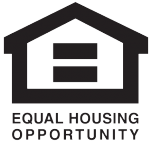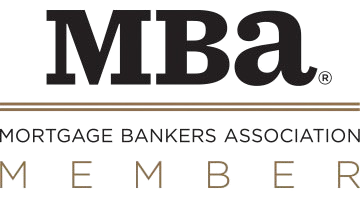Editorial Integrity
Moving to the US can feel overwhelming, filled with unknowns and uncertainties. HomeAbroad editorial team includes certified immigration experts/USCIS nerds who translate complex legalese into clear, actionable moving and visa guides. Rest assured, every article undergoes a reader-centric editorial process to ensure accuracy and reflect current regulations.
Key Takeaways:
1. Australians can move to the US with the right visa depending on their purpose, whether it's work, study, or family.
2. From diverse cities to exciting career paths, the US offers plenty of opportunities for Australians ready to explore something new.
3. With HomeAbroad’s help, it’s much easier to open a US bank account, buy a home, and even get a mortgage without a US credit history.
Relocating from Australia to the United States is a major life decision. It often comes with a mix of excitement and uncertainty.
You are probably wondering where to begin, what steps to follow, and how life in the US really compares to Australia. From visas and job opportunities to housing, healthcare, and the cost of living, there’s a lot to consider.
This guide is here to give you a clear, step-by-step understanding of what to expect and how to prepare. Whether you’re moving for work, study, or a fresh start, you’ll find everything you need to make informed decisions and feel confident about your move.
Table of Contents
How to Move from Australia to the US: Step-by-Step Guide
Relocating is a major life event that involves planning across multiple areas, from securing a visa to setting up your new life. Here’s a clear step-by-step overview to help simplify your move.
1. Choose the Right Visa
Australians planning to move to the US can choose from various visa options, depending on their reason for relocation. Whether you’re aiming to work, study, invest, or join your family, there’s a visa that fits your purpose.
Here’s a quick breakdown of the most commonly used visa categories:
1. Work Visas
- E-3 Visa: Exclusive to Australian citizens, this visa allows professionals to live and work in the US in a specialty occupation.
- H-1B Visa: For skilled workers in specialized fields like tech, finance, and engineering. Subject to annual caps.
- L-1 Visa: For intra-company transferees moving from an Australian branch to a US office.
- O-1 Visa: For individuals with extraordinary ability in fields like arts, science, education, or business.
- R-1 Visa: For religious workers entering the US to perform religious duties.
2. Student Visas
- F-1 Visa: For full-time academic studies at a US college or university.
- M-1 Visa: For vocational or technical training programs.
- J-1 Visa: A cultural and educational exchange visa that allows Australians to work or intern in the US as part of exchange programs
3. Investor and Business Visas
- E-2 Visa: For Australians investing a substantial amount in a US business.
- B-1 Visa: For short-term business trips like attending meetings or negotiating contracts.
- EB-5 Visa: For investors who invest $1.05 million (or $800,000 in targeted employment areas) in a US enterprise that creates at least 10 full-time jobs.
4. Family-Based Visas
- IR-1/CR-1 Visa: For spouses of US citizens. IR-1 is for marriages over 2 years; CR-1 is for recent marriages.
- K-1 Visa: For engaged partners of US citizens. The couple must marry within 90 days of entry.
- K-2 Visa: For unmarried children under 21 of a K-1 visa holder.
- K-3 Visa: For spouses of US citizens awaiting immigrant visa processing.
- K-4 Visa: For unmarried children under 21 of a K-3 visa holder.
- F-1, F-3, F-4 Visas: For adult children and siblings of US citizens under specific family preference categories.
Choosing the right visa is the first and most crucial step in your journey from Australia to the United States. Each visa type comes with its own requirements, timelines, and benefits, so it’s important to assess your long-term goals and eligibility before applying.
2. Gather the Required Documents
Once you’ve chosen the right visa, the next step is to prepare the required documents. Having everything in order will make the application process smoother. Common documents include:
- Valid Passport – Ensure your Australian passport is valid for the entire duration of your stay in the US
- Visa Application Forms – Depending on your visa type, forms like DS-160 (for nonimmigrant visas) or I-130 (for family-based Green Cards) may be required.
- Proof of Financial Stability – Bank statements, employment letters, or sponsor affidavits to show you can support yourself financially.
- Educational and Work Records – Transcripts, diplomas, employment verification letters, or evidence of business ownership for work or student visas.
- Marriage or Birth Certificates – If you’re applying for a family-based visa, these documents are necessary to prove your relationship.
- Health and Police Clearances – Some visa types may require a medical exam and a police clearance certificate to verify your background.
Additional documents may be required based on your specific visa type. Always refer to official US immigration guidelines for the most up-to-date requirements.
3. Finding a Place to Live
Securing housing in the US is an important part of your relocation journey. Whether you’re planning to rent temporarily or buy a home long-term, it’s essential to research your options ahead of time.
If you’re planning to buy a home, working with professionals who understand the unique challenges international buyers face can make the process much smoother and more efficient.
At HomeAbroad, our team has years of experience helping Australian homebuyers find the right property and secure financing in the US. We simplify the entire process by offering tailored mortgage solutions and guiding you to the best places to live based on your goals, lifestyle, and budget.

Pre-qualify for a US mortgage as an international buyer.
No US credit history needed.
I’ve helped many Australians buy property in the US, and most are surprised by how smooth it is with the right guidance. We help them understand their financing options, find properties that match their goals, and guide them every step of the way.
Steven Glick, Director of Mortgage Sales, HomeABroad
4. Planning Your Move: Shipping and Relocation
Once your visa is secured and housing arrangements are underway, it’s time to plan how you’ll relocate your belongings from Australia to the US. Whether you’re bringing just a few suitcases or your entire household, careful planning will ensure a smoother and stress-free move.
Here are the key things to keep in mind as you prepare for the move:
1. Hiring an International Moving Company
Consider working with a moving company that specializes in international relocations from Australia to the US. These companies can help with packing, transportation, customs documentation, and door-to-door delivery.
Be sure to compare quotes, verify insurance options, and check customer reviews before booking.
2. Choosing the Right Shipping Method
You can ship your belongings by sea freight (cost-effective for large volumes, takes several weeks) or air freight (faster but more expensive). If you’re only taking essentials, some people opt to fly with extra luggage or use baggage shipping services.
3. Bringing a Personal Vehicle
If you plan to bring your car, make sure it meets US import and safety regulations. You’ll also need to:
- File vehicle import paperwork
- Pay customs duties (if applicable)
- Register and insure the vehicle in your US state
Alternatively, you can use an auto transport service to ship your car professionally.
Customs and Documentation
When relocating, you’ll need to comply with US customs regulations. Essential paperwork includes:
- A detailed inventory of all shipped items
- Valid passport and visa documents
- Bill of lading or shipping invoice
- Vehicle import documents (if applicable)
Avoid restricted items. Always check the latest guidelines from US Customs and Border Protection.
Planning your relocation carefully can save you time, money, and stress. Start early, stay organized, and make sure all paperwork is ready before shipping to avoid delays at customs.
5. Setting Up Essentials After You Arrive
Once you’ve landed and settled into your new home, the next step is organizing the day-to-day essentials to make your life in the US functional and comfortable. Here’s what Australians should prioritize:
- Open a US Bank Account
A local bank account is crucial for receiving income, paying rent, and managing bills. Most major US banks allow Australian citizens to open accounts with a valid passport, visa, and proof of address.
At HomeAbroad, we help you with US bank account opening. Our team guides you through the documentation, answers your questions, and makes the process smoother so you can start managing your finances in the US with ease.
- Get a US Driver’s License
You can use your Australian license temporarily. Eventually, you’ll need a local one, which may require a written and/or driving test (varies by state).
- Set Up Utilities and Internet
Set up essential services like electricity, water, gas, and internet to make your new place livable. Providers differ by city and state, so compare plans and read customer reviews. Most companies allow online setup if you have a Social Security Number or a US bank account.
- Secure Health Insurance
The US healthcare system is different from Australia’s Medicare system, so having proper health insurance is critical. You can explore private insurance plans, employer-provided coverage, or short-term policies.
Setting up these essentials early will help you settle in confidently and begin building a stable, comfortable life in the US.
Cost of Living in the US
If you’re planning to move from Australia to the US, it’s important to get a clear picture of what everyday life will cost. Living expenses in the US can vary a lot depending on where you settle, how you live, and your personal needs. Having a solid understanding of these costs upfront will help you budget better and settle in with fewer surprises.
Everyday items such as groceries, and utilities may feel comparable to what you’re used to in Australia. However, certain services like mobile plans or the internet might differ in pricing or quality depending on your location.
To manage your finances effectively, it’s important to research your destination city, understand the local tax structure, and plan your budget in advance. This will help you adjust more easily and avoid surprises as you settle into your new life in the US.
Why Are Australians Moving to the US?
More and more Australians are choosing to relocate to the US for a mix of career opportunities, lifestyle upgrades, and international experience. The country’s vibrant cities, innovative industries, and cultural familiarity make it a top destination for those ready to explore life beyond Australia.
1. Broader Career Opportunities
The US job market spans countless industries, from Silicon Valley’s booming tech scene to Wall Street’s financial hub and Hollywood’s creative powerhouse. Australians working in IT, engineering, and healthcare can find a wide range of roles with excellent growth potential.
In addition, the US is a global leader in innovation and research, offering unique experiences and professional development opportunities that are hard to find elsewhere.
2. Competitive Salaries
Many Australians are drawn to the higher earning potential in the US. Salaries in specialized fields are often significantly greater than what’s offered back home.
This financial boost, combined with access to global companies and strong professional networks, makes the US an appealing choice for driven professionals.
3. Cultural Compatibility and Language Advantage
Australians often find it easy to integrate into American life. With a shared language and many overlapping cultural elements from media and food to sports and values, the transition is often smoother compared to moving to other non-English-speaking countries.
4. Educational and Research Opportunities
The US is home to some of the world’s leading universities and research institutions. Australians moving for higher education or academic careers gain access to top-tier programs, cutting-edge facilities, and international faculty.
This is especially appealing for students and researchers looking to advance their academic and professional paths on a global stage.
5. Diverse Lifestyle Options
Whether you’re drawn to New York’s fast-paced city life, California’s coastal vibe, or Texas’ affordability and warmth, there’s a place for every preference. Americans value individuality, and the country offers a broad spectrum of lifestyles, climates, and communities.
6. Entrepreneurial Environment
For Australians looking to launch a startup or expand an existing business, the US offers a supportive ecosystem with access to funding, talent, and business-friendly policies in many states.
Conclusion
Relocating from Australia to the United States is more than just a move. It is the start of a new journey filled with opportunity. Whether you’re pursuing a career, education, or a fresh lifestyle, the US offers a dynamic environment to build a future that aligns with your goals.
As you plan your move, taking care of each step, such as securing the right visa, arranging housing, and setting up essentials, will help you settle in with confidence. If buying a home is part of your long-term plan, having expert support can make all the difference.
HomeAbroad is here to guide you through that process. Our team of experts specializes in helping buyers from Australia purchase property in the US. We understand your unique needs and are committed to making homeownership in America an achievable and rewarding part of your relocation.
Start your journey today and make the US your new home with confidence!
FAQs
Can Australians move to the US permanently?
Yes, Australians can move to the US permanently by applying for immigrant visas such as family-sponsored Green Cards, employment-based visas, or through investment options like the EB-5 visa.
Can I buy property in the US as an Australian citizen?
Yes, Australian citizens can legally buy property in the US. There are no restrictions on foreign ownership of real estate. At HomeAbroad, we offer tailored mortgage options specifically designed for Australian buyers. Check out our complete guide to buying property in the US as a foreigner.
Can I work in the USA as an Australian citizen?
Yes, Australian citizens can work in the USA with a valid work visa. Popular visa options include the E-3 (exclusive to Australians), H-1B, L-1, O-1, and R-1.
At HomeAbroad, we ensure the reliability of our content by relying on primary sources such as government data, industry reports, firsthand accounts from our network of experts, and interviews with specialists. We also incorporate original research from respected publishers when relevant. Discover more about our commitment to delivering precise and impartial information in our editorial policy.
US citizenship and immigration services: https://www.uscis.gov/

















